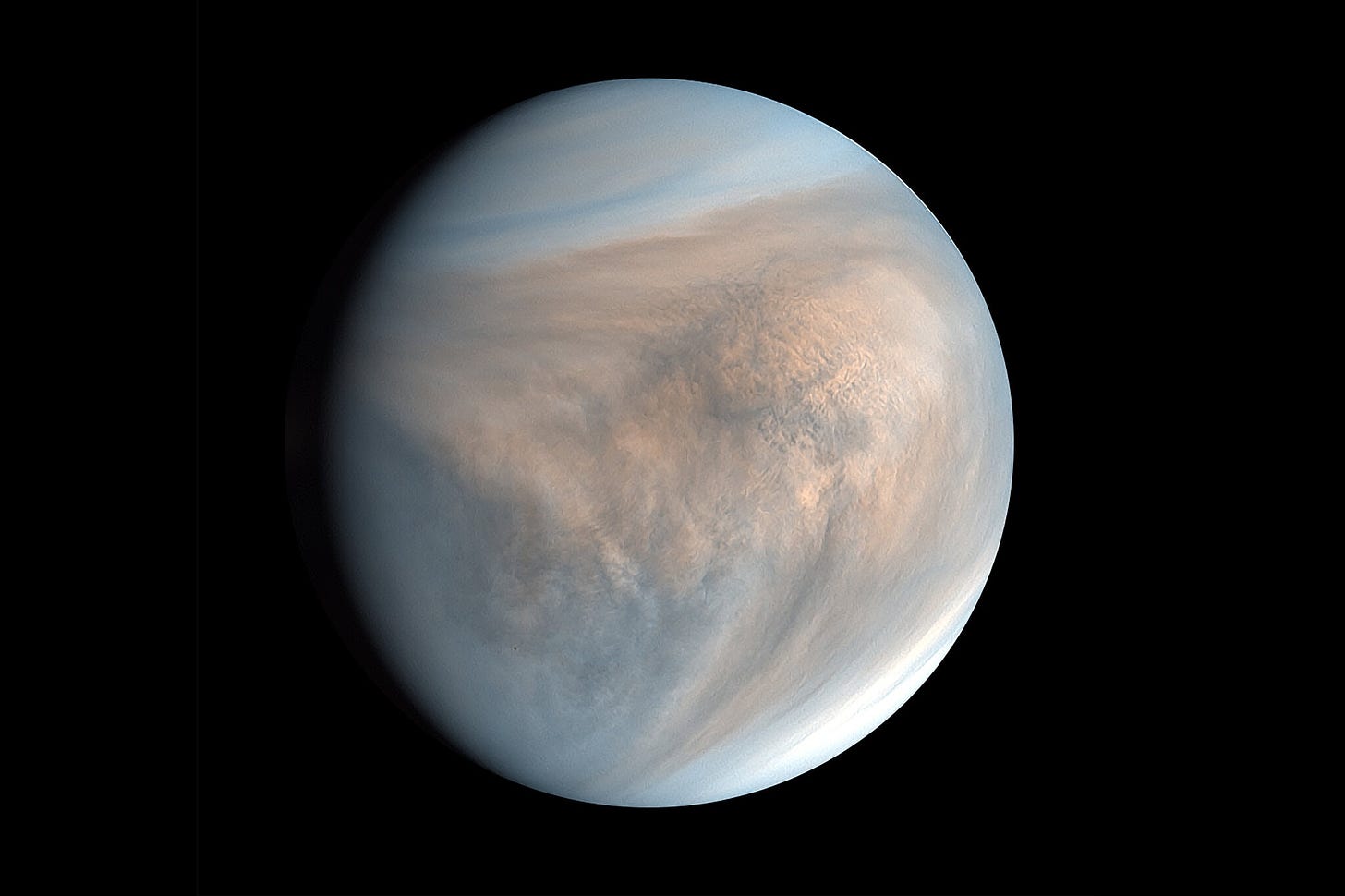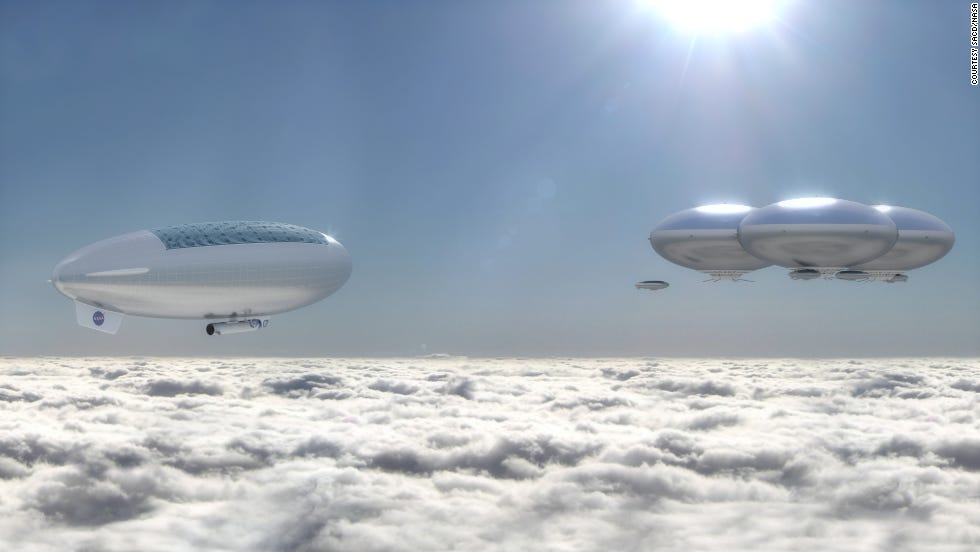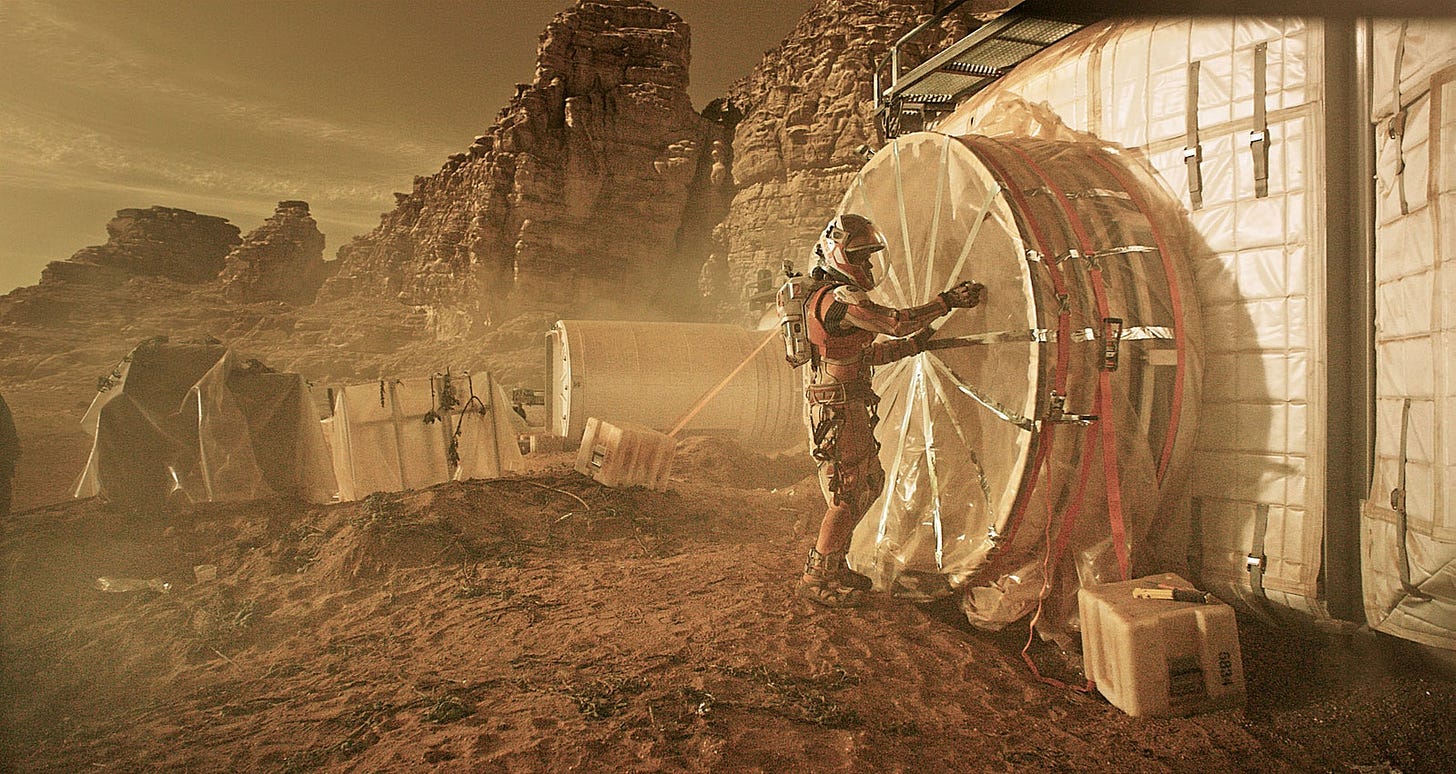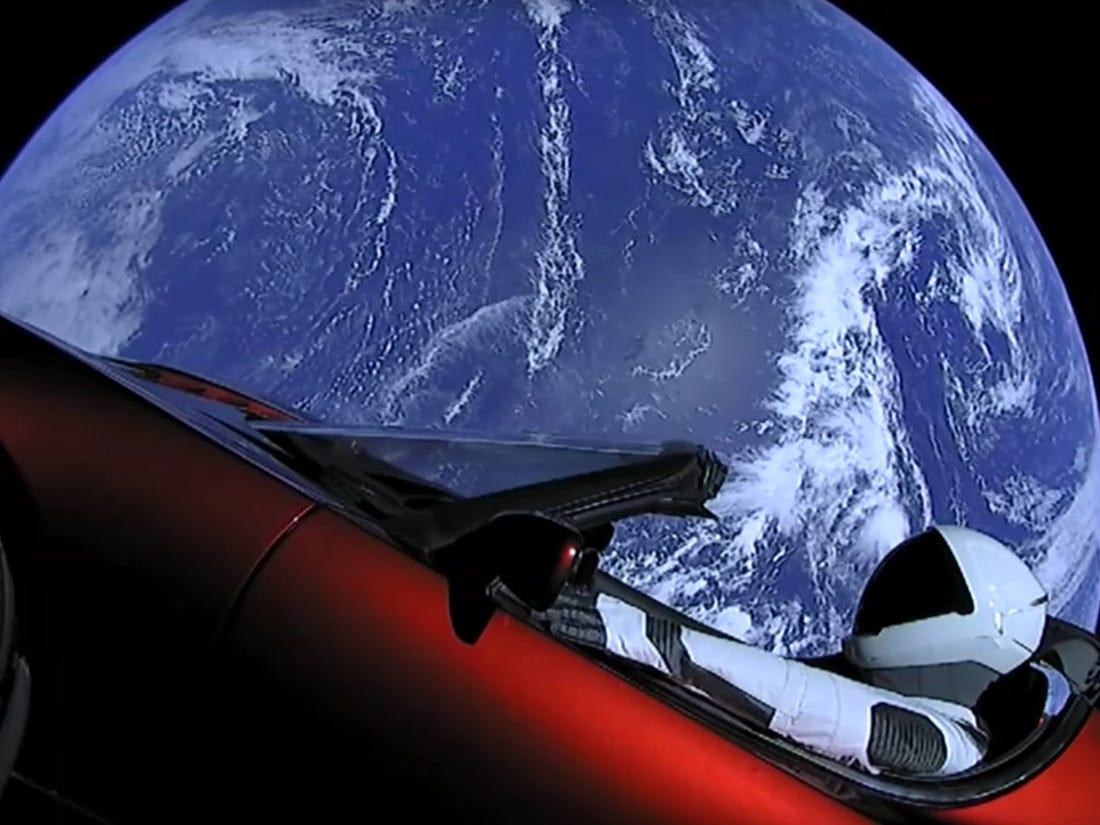Elon Musk wants to park a Tesla on Mars. Let’s go to Venus instead, and build a new way of life.
It’s possible that life already evolved on Venus, and you may have heard about a recent paper showing phosphenes in the planet’s upper atmosphere. Phosphenes are a chemical signature of biological processes, and so everybody got excited — though a re-examination of the evidence suggests the phosphene sighting may have been a trick of the light.
There’s also some evidence that Venus was once covered in oceans, and perhaps rich with life a billion years ago. But something catastrophic happened — or, maybe, a series of small changes that added up to a slow but planet-altering transformation — and the planet wound up with a superheated surface and permanent cloud cover. Venus is also one of only two planets in the solar system that rotates clockwise — Uranus is the other — which has led some scientists to speculate that the planet flipped upside down at some point in its history. Yeah, so the universe has been tough on Venus. Still, that doesn’t mean it couldn’t be our future home.
Look, it’s our beautiful friend Venus. Contrary to popular belief, Venus is not our “sister,” and it does not have a gender. Neither does Mars. Actually, they are just rocky bodies surrounded by gas, in orbit around the Sun! Credit: PLANET-C Project Team/JAXA
Welcome to the floating city
Let’s start with the pragmatic reasons to pick Venus as our next stop for human habitation. First, Venus is slightly closer to the Earth than Mars is, so it’s faster and easier to get there. Its gravity is comparable to Earth’s, so that means we wouldn’t suffer from bone density loss and other problems associated with low-gravity environments. And perhaps most importantly, its upper atmosphere and magnetic field would provide protection from cosmic radiation.
Radiation on other planets is actually a big deal. On Earth, our powerful and weird magnetic field protects us from most of the cosmic rays zooming into our atmosphere from space. But did you know that if we set up a little town on Mars, they would require radiation shielding? That’s one reason why scientists have suggested humans would need to live underground on Mars — the regolith would provide natural protection. Any time you left the comfort of your hardened habitat, you’d need to wear heavy gear to stay safe. Or maybe you’d be genetically modified so that your DNA could repair itself after radiation damage. Either way, it’s going to be a giant pain in your favorite polynucleotide chains.
Here’s a NASA artist’s interpretation of cities floating like super blimps in the Venusian atmosphere.
Life on Venus would be wholly unlike Earth. The surface of the planet is unlivable for humans: the intense atmospheric pressure and heat is like being at the bottom of a very deep ocean that’s hot enough to melt lead. So we’d have to live in the clouds, right below the protective ionosphere that sucks up radiation. What’s cool about Venus is that we could build cities inside balloons of breathable atmosphere, and they would float. That’s the idea of a NASA scientist named Geoffrey Landis.
But wait, you say — we’d live in a balloon? Isn’t that kind of dangerous? Well, no more dangerous than living inside a radiation-shielded bunker on Mars. Either way, you’re looking at some degree of precarity when you depend on a fabricated habitat for survival. The good news is that if something did smack into one of our breathable-air balloons floating in the Venusian atmosphere, the pressure inside would be equal to the pressure outside. So that means the balloon wouldn’t catastrophically explode, but instead leak very slowly until we patched it up.
Cars on Mars
Though life on Venus sounds bonkers, life on Mars is easy to imagine. It’s a place where we could build homes that are relatively recognizable. Though the planet’s surface is cold, barren, has low gravity, and is bombarded with radiation, it could support those hardened bunkers I mentioned earlier. Cities there would look familiar, even if we might have to be very different genetically to live in them.
The habitat where our hyper-competent hero lives in the movie The Martian. It looks a lot less weird than a cloud city.
Because Mars feels more normal to us, there has been a lot of hype about settling there. Tech billionaire Elon Musk wants to do it, and a group of men — mostly entrepreneurs — who run Mars One have recruited people to colonize the planet despite the fact that the mission would almost certainly be one-way. Taking their cues from aerospace engineer Robert Zubrin, author of the influential The Case for Mars, these men argue that we should stake our claim to Mars and terraform it to our heart’s content. In other words, they want to transform the planet into their idea of livable world.
But what, exactly, is a livable world?
Obviously, one goal of terraforming Mars would be to bring water back to its surface, and a breathable atmosphere over that. It’s not entirely clear how we’d solve the radiation problem — that would require us to build a magnetic field — nor how we’d solve the low gravity problem. But let’s handwave that stuff away, and assume it’s somehow possible.
The more urgent question is who is doing the terraforming, and to what end? Most of our biggest Mars advocates currently are wealthy white men who own aerospace companies. In other words, they aren’t just interested in exploring Mars for its own sake — or creating human habitats for the good of all people. They want to sell us tickets on their spaceships. They want us to live in the habitats that they build. And maybe they’ll eventually want us to invest in their terraforming machines.
What does a planet terraformed by entrepreneurs look like? One possibility is what we see in the movie Total Recall, with its underground Martian habitats where the poor die when they can’t pay their oxygen bills. We see a similar idea in The Expanse TV series, where the laboring classes in the asteroid belt become sickly because they can’t afford proper gravity. These stories might not be far from the truth of a world built by capitalism from the ground up.
SpaceX, Elon Musk’s space colonization company, released this promotional image of a Tesla car heading into space. You’ve got product placement and a reference to the type of vehicle that has destroyed our own planet.
When I imagine the Martian colonies created by Musk and his crew, I always think about the publicity photo that Musk released of the Tesla car he shot into space. Automobile companies have already terraformed Earth to a large extent, remaking open spaces into asphalt palimpsests ideal for cars but not so much for people and other animals. Is this what they plan for Mars?
I’m not saying that life in the clouds of Venus would be different simply by virtue of being on a different planet. But right now, we’re at the thought experiment stage with both worlds. We can be colonists in the fullest, most historical sense of the word, which is to say alien invaders who want to remake the worlds we find in the image of our rulers. Or we can be explorers who seek to find homes for ourselves in worlds that are already made. We can integrate into already-existing environments that are worth preserving. Maybe we’ll even construct settlements that serve the public rather than capital.
Obviously there’s nothing about Venus that’s inherently more likely to engender a democratic space settlement. But perhaps having to rethink what a habitat is in the first place will spur us to rethink social contracts, too.
Other stuff I’m thinking about
I loved this incredible two-part edition of the Bay Curious podcast, all about the notorious Donner Party and what really happened on that snowy mountain pass where desperate settlers became cannibals. You’ll learn about the grifters who sold them a bad map of the area, the media shaming that dogged the survivors, and the indigenous men who were among the first to be eaten by the white settlers. It’s a fantastic and gripping historical tale.
Speaking of historical tales set in the San Francisco Bay Area, I’m also obsessed with season two of Warrior. This is a TV series originally conceived by Bruce Lee, about Tong warfare in late 19th century San Francisco. Now it’s a Cinemax series, produced by Shannon Lee and Justin Lin. It’s one of the most realistic portraits I’ve seen of San Francisco city life in that era, complete with anti-Chinese racism, union politics, corrupt industrialists, and (less realistic but truly awesome) fight scenes. Check out season one, too! It’s a delight.
Also, did you know I wrote a book about how humanity will save itself by going into space? It’s not even fiction! Check out Scatter, Adapt, and Remember: How Humanity Will Survive a Mass Extinction.
My next book is Four Lost Cities: A Secret History of the Urban Age. It's coming out in February 2021, and you can pre-order it now. You can find information and ordering links for my other books on my website, helpfully organized into science fiction and journalism. You can also follow me on Twitter or Instagram — or listen to Our Opinions Are Correct, the fortnightly podcast I co-host with Charlie Jane Anders. If someone forwarded this email to you, you can subscribe to it here.






